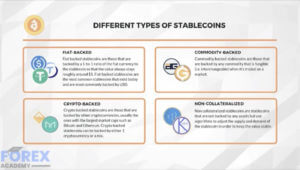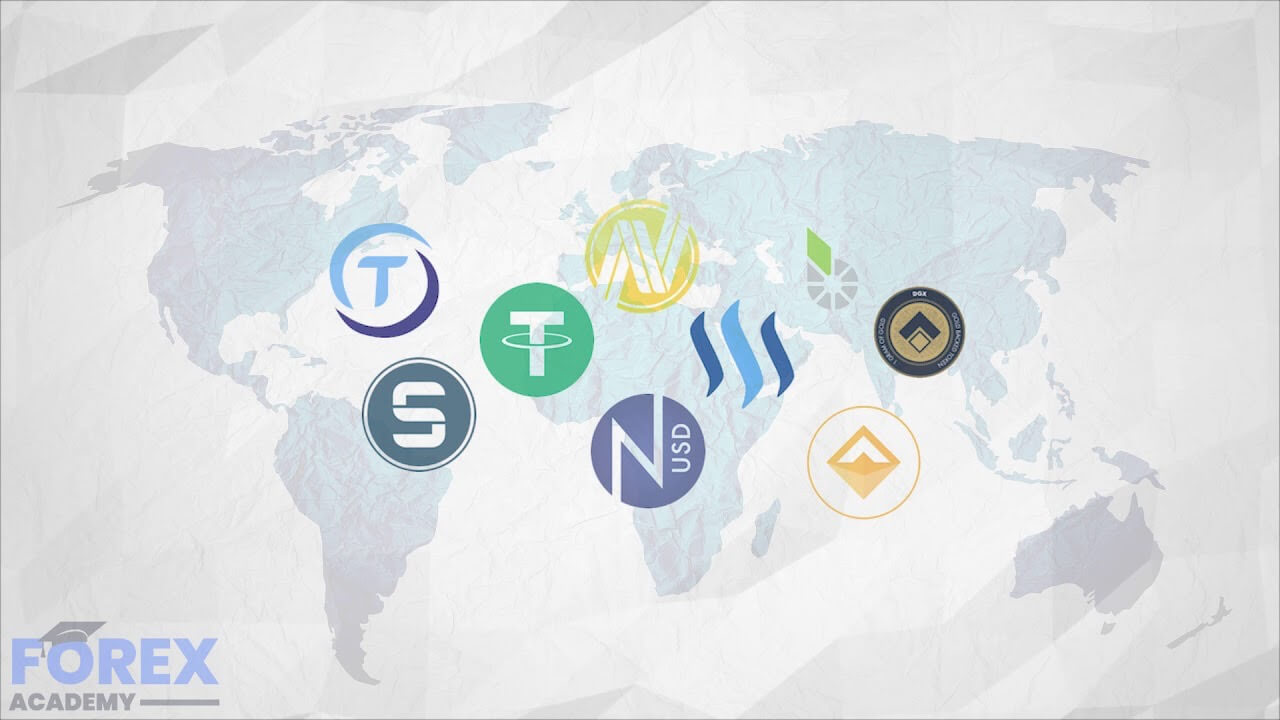What are stablecoins?

Cryptocurrency and blockchain both have the potential to change how we see the world. However, cryptocurrencies are still young and too volatile on every single time-frame. Crypto investors have become millionaires overnight, only to lose a sizable portion of the earnings just a month or two later. Even though some see volatility as an opportunity, it mainly shows how cryptocurrencies are still unreliable and how their price is not yet determined by society. This is how the idea of stablecoins came to life.
Stablecoins are cryptocurrencies that have a much more fixed price when compared to the regular cryptocurrencies. The fixed price most often comes from pegging stablecoin’s price to other assets such as the US dollar or gold. This lets stablecoins retain most of the attributes of a cryptocurrency (transparency, security, privacy, etc.) without extreme volatility. Stablecoins were created with the intention of people using them, just like any other cryptocurrency. They are meant to be a simplistic, stable, easy to use, scalable, and secure means of transactions.
Many stablecoin projects have been released lately. This so-called “stablecoin invasion” brought at least 57 stablecoins to the market, according to a recent report. Out of the 57, Paxos Standard (PAX) and Gemini Dollar (GUSD) have even been approved and regulated by the New York State Department of Financial Services.
Why do we need stablecoins?
Stablecoin is a cryptocurrency that was created with the aim to mimic traditional, stable currencies. A stablecoin is collateralized to the value of an underlying asset, which can vary from one stablecoin to another. Many stablecoins are pegged to certain fiat currencies, such as the US dollar or the Euro, while other stablecoins are pegged to other kinds of assets, such as precious metals, real estate, or even other cryptocurrencies.
The primary characteristic of stablecoins is that they are not subject to the extreme price volatility that affects other cryptocurrencies. Stablecoins leverage the benefits of cryptocurrencies (transparency, security, immutability, fast transactions, low fees, privacy, etc.) while keeping the expected value that the market expects from it in order to be a viable means of payment as well as a unit of account
Stablecoins can be used in many cases to improve the state of finance all around the world:

They could benefit many industries and individuals that need to make international payments quickly as well as securely. Stablecoin users could range from migrant workers that want to send some money back to their families all the way to big businesses looking for a more efficient way of paying their international suppliers.
Many people all across the globe are underbanked, meaning that they don’t have sufficient access to mainstream financial services. People in underbanked communities can transact using stablecoins.
Stablecoins could help in areas where economic uncertainty is a regular concern, and inflation is extremely high. Using stablecoins will bring safety to its users as it will have no notable inflation regardless of the local laws, news, or conditions.
Using stablecoins globally could drastically improve the financial industry. This could range from cross-border lending to financial planning. Broadly, this could transform those involved with applications across the cryptocurrency space, such as traders, investors, and blockchain-based businesses.
Stablecoins are mainly used as a safety net for crypto investors at the moment. By acting as a safe haven in the event of a market crash, cryptocurrency investors can move their funds from regular cryptocurrencies into stablecoins without ever having to move their capital back into fiat currencies. This reduces exchange costs and cuts back on time required to leave cryptocurrency positions.
Types of stablecoins

There are four types of stablecoins based on how what they are backed by:
Fiat-backed stablecoins;
Commodity-backed stablecoins;
Cryptocurrency-backed stablecoins;
Stablecoins with no collateral (algorithm-backed stablecoins).
Fiat-backed stablecoins
Fiat-backed stablecoins are backed by fiat currency in a 1-1 ratio. This way, the stablecoin’s value always stays roughly around $1 (as most stablecoins are backed by USD). Fiat-backed stablecoins are the most common stablecoins.
Some of the most popular fiat-backed stablecoins are USDT (Tether), TrueUSD (TrustToken), PAX (Paxos), etc.
Commodity-backed stablecoins
Commodity-backed stablecoins backed by any interchangeable commodity. These stablecoins could be backed by oil, precious metal, or grain. Most commodity-backed stablecoins are using either gold or oil as their collateral.
Some of the most popular commodity-backed stablecoins are DGX (Digix) and Gcoin (G-Coin). Cryptocurrency-backed stablecoins
Cryptocurrency-backed stablecoins backed by other cryptocurrencies, usually the ones with the largest market caps. These stablecoins almost always use Bitcoin or Ethereum as their collateral. They can, however, be backed by more than one cryptocurrency to avoid extreme volatility. Crypto backed stablecoins are usually overcollateralized as they need to take into consideration the price fluctuations of the native cryptocurrencies.
Some of the most popular cryptocurrency-backed stablecoins are DAI (Maker DAO), bitUSD (BitShares), and sUSD (Synthetix).
Stablecoins with no collateral (algorithm-backed stablecoins)
Noncollateralized stablecoins are stablecoins that are not backed by any asset. Instead, they use certain algorithms to adjust the supply and demand of the stablecoin itself. That way, they can keep the stablecoin’s value stable.
Some of the most popular non-collateralized stablecoins are CarbonUSD (Carbon) and kUSD (Kowala).
Conclusion
Stablecoins bring a completely new aspect of complete stability to cryptocurrencies, but will that be enough for them to become popular and widely-used? Only time can tell.





